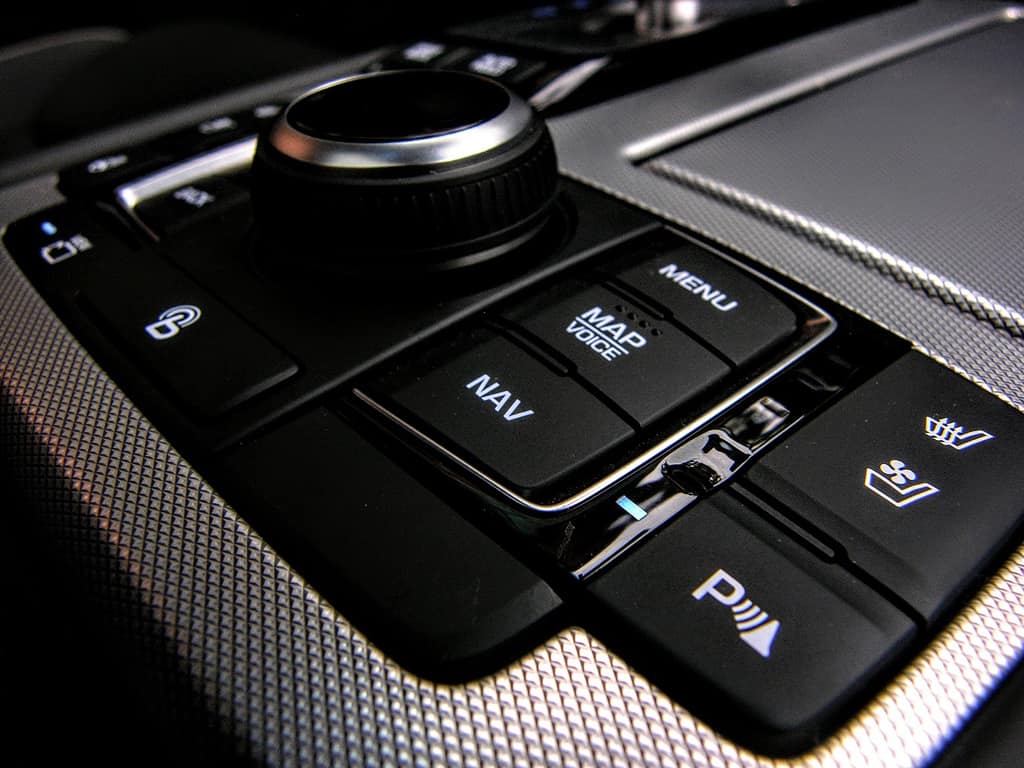Nothing ruins a perfectly fine afternoon cruise in an automobile quite like an offensive odor. There you are, cruising the backroads, enjoying some foot-tapping tunes, and suddenly… BLAMMO! The putrid smell of mildew fills your nostrils, and visions of mold spores infiltrating your nasal cavity stamp out every milligram of driving enjoyment you felt just a few moments prior.
Like dog shit on your shoe, the hint of mildew while driving is one of those instantly recognizable aromas that both offends and forces deep contemplation to occur. Why am I smelling mildew right now? Is there black mold somewhere nearby? How long have I been breathing this filth? Where in the hell is this aroma coming from? IS IT IN MY CAR SOMEWHERE???
These and many more uncomfortable questions rattle around inside your skull, as desperately try to ascertain how wafting plumes of spore-filled unpleasantries have made their way inside your automobile.
Fret not good citizen. Identifying the location and cause of mildew is a relatively simple (if just a tad labor intensive) matter, as is its removal, along with the prevention of any future unpleasant occurrences. So put on your rubber gloves, mask-up, and let’s go squash some spores!
So Moist Right Now…

With the right elements in play, mildew can form on pretty much any surface. All this shit needs is some moisture, a general lack of sunlight, enough warmth for growth, and a stray spore or two, and zingo amigo… you’ve got mold. Automobiles often offer ideal environments for this sort of unsavory colonization to occur too. You may not be able to see it with the naked eye, but automobiles come into contact with all manner of organic, spore-laden matter on almost a daily basis. Toss in the fact that car windows are often left open to let in “fresh air,” and that many drivers go entirely too long between cabin air filter changes, and you’ve got the ideal breeding ground for mildew and mold.
Mud on your boots during a soggy day in spring, a cracked window left open overnight in the humid heat of summer, or a dropped juice box in the backseat while on a family road trip is all it takes to kick things off too. We don’t have weeks to explain all of the scenarios, so you’ll just have to believe us when we say that the list of potential mildew and mold catalyzers is not only lengthy, but as you shall soon discover, damn near impossible to avoid.
Quick Tip: If you notice excessive amounts of condensation on the inside of your windshield, immediately check it for chips and cracks, and/or a worn or missing lining. This, and moisture build-up on your vehicle’s heater core are both catalysts for mold and mildew growth.
Mold and Your Health

Since molds and mildews naturally exist outdoors and indoors, having an environment devoid of these organic compounds is literally impossible. That said, there’s a huge difference between living alongside this stuff, and over-exposing oneself. Inhaling large amounts of mildew spores can cause any number of mold-related health concern to surface, which is why removal and prevention in enclosed environments, like automobile cabins, is so crucial to the occupant’s safety.
“Molds and mildews produce allergens, irritants and, sometimes, toxins that may cause adverse reactions in humans. A reaction to mold depends on how much a person is exposed to, the age of the person and the person’s sensitivities or allergies. The same amount of mold may cause health effects in one person, but not in another.”
--The Illinois Department of Health
Looking for a few examples of how exposure to mold or mildew can negatively effect your health? The Illinois Department of Health has a lot to say when it comes to the subject of mold and mildew. Perhaps it’s best if we just leave the following warning right here for you to ponder: “Exposure to mold can cause a variety of symptoms. Sensitive people who have touched or inhaled mold or mold spores may have allergic reactions such as a runny nose, sneezing, nasal congestion, watery eyes, skin rash and itching (dermatitis). Molds can trigger asthma attacks in people who are allergic to molds, causing wheezing, chest tightness, and shortness of breath. A disease like pneumonia may also develop after exposure to mold, but this is uncommon.”
What causes a mildew smell to form, and is inhaling this crap hazardous?

Mold and mildew’s distinctly unpleasant aroma stems from substances scientists refer to as microbial volatile organic compounds, or mVOCs. Produced during various phases of fungal metabolic growth, these airborne compounds often give off strong odors that, in certain cases, can irritate the eyes and respiratory system. Reports have found that the inhalation of mVOCs has been linked to symptoms such as headaches, dizziness, fatigue, nasal irritation, and nausea. Furthermore, the effects of mVOCs are still being evaluated by the scientific community, which basically translates too: “We don’t really know what this shit does to the human body, so please stad by for future updates, and stay safe out there ya’ll!”
Quick Nerd Note: If you are concerned that contact with mold or mildew may be causing allergic reactions, you should forego a blood test, and opt to undertake a skin test instead, and here’s why. When it comes to detecting mildew and mold allergies, skin tests are far more reliable than blood tests. They also yield results more quickly, are not nearly as expensive, and are far less invasive.
A report by AutoGuide, that focuses on the subject of mold and mildew forming within a car’s interior, explains that while many variants can be labeled as little more than an annoyance, there are certain variants that pack a particularly nasty punch. Take species Stachybotrys chartarum and chlorohalonata for instance. Commonly referred to as black mold, these two evildoers are categorized as extremely toxic, and can cause all manner of ailment to form in humans. Some of these reactions include fatigue and weakness, headaches, poor memory, shortness of breath, abdominal pain and bloating, and in certain cases, death.
Colonization and Your Transportation: Where Mildew and Mold Like to Form in Automobiles

Regardless of what their brand message may be, almost all glass specialists seem to agree upon one thing: Locating a leak is easier said than done. It doesn’t take a large leak for mold or mildew to form either, so don’t expect to find a deluge of water coming from an obvious source. An improperly installed windshield can lead to hairline gaps along the edges, but that doesn’t mean that you’ll find a quagmire forming on your car’s dashboard. Tiny trickles, and miniscule drips along a windshield typically end up running downward, eventually finding a home in hard to access areas within the front console and underneath footwells.
But perhaps the most common weak point is one of the most popular, and in many ways, completely pointless, automotive additions: Sunroofs. While forgetting to fully close a sunroof is the most common conundrum, there are quite a few other issue that must be taken into consideration.
Cracks and damaged lining can form an improper seal, or a dying motor can cause uneven or incomplete closures. Sunroofs also have drain holes, which tend to be located in the four corners of the frame that the sunroof rests in, all of which are designed to safely channel water outward via tubing hidden within door pillars. Clog this drainage system, and water will build-up inside the sunroof track, and with nowhere to go, it’s just a matter of time until it finds a new home inside your vehicle.
Quick Tip: Never use compressed air or a sharp tool to try and clean out the drainage ports within a sunroof track, for you will likely only make matters worse. Sharp tools can cause rips or unwanted holes to form in various areas of the sunroof’s gasket, and the use of compressed air can push debris deeper down into the drainage lines. Vacuuming the sunroof track and drainage points is the safest, and most effective approach.
So how do you ensure that a sunroof will not turn your car’s interior into a mold farm? According to Geico, the following basic sunroof maintenance steps go a long way to alleviating these concerns.
- Open the sunroof and clean all visible areas of the track and gasket with a vacuum.
- Wipe down the inside of the sunroof track, and any gaskets found therein with a clean microfiber cloth, and then spray all moving parts with an approved automotive cleaner before using a toothbrush to remove any stubborn debris or build-up.
- Once the track is dry, spray a small amount of heat-resistant grease (white lithium is best) on any joints, slides, and moving parts.
- As for cleaning the glass itself, always use a cleaner that does not contain ammonia or vinegar, as they can cause irritation if inhaled.
As for everything resting underneath that sunroof, it’s worth remembering that mildew and mold don’t require a lot of coaxing in order to colonize your car’s cabin. Dark, warm, and moist environments are breeding grounds for this stuff, so you can bet your ass that mold is all about those areas underneath the seats, below the steering column and glovebox, and within the confines of the trunk.
But let’s not forget that mold growth can also be found on exterior surfaces, and upper portions of a car, like the steering wheel, dashboard, and center console. This is especially true when a vehicle is parked beneath the shade of a pollen or berry-filled tree, or is left for prolonged periods of time within a poorly ventilated garage space. The development of mildew on various components found within the car’s engine compartment is also fairly commonplace, especially on porous parts, like paper air intake filters and rubber hoses.
When considering which areas to inspect and sanitize, a good rule of wrench is to take an all-encompassing approach, and disinfect every imaginable surface area, just to guarantee that no portion of the vehicle is left for spores to take root. This leads us to our next topic of discussion. With the mold and mildew breeding ground located, it is now time for the removal process. But what about preventing this crap’s unwelcome return?
How to Remove Mildew From a Vehicle
When it comes to removing mildew and mold from an automobile, NAPA Auto Parts suggests that once the problematic area has been identified, you should “…get after it right away with a spray cleaner specially formulated to remove mildew stains.”
But before the mold massacre can begin, the vehicle should first be brought out into direct sunlight (if possible) and any removable cabin component within the vehicle should be detached an placed outside. Unbolt the front seats, remove the floor mats, unhinge the rear bench, and gut that trunk and everything underneath it. This approach may add some additional steps, but it will allow you to not only conduct a far more thorough cleaning, but it will permit easier access to areas that are not normally reachable.
As a bonus, all of that direct sunlight will help kill any lingering mold spores that you might miss, all while keeping fumes to a minimum. In order to further air-out that interior, feel free to keep all of those car doors open, along with the trunk/rear hatch. Just don’t forget to disconnect the negative terminal on your car battery or manually switch off those interior lamps in order to negate the need for a jump later on.
Now, when it comes to cleansing seat fabric, upholstery, headliners, and carpet, we suggest skipping the shampoo, and going straight to a concentrated mildew and mold killer. However, these chemicals typically require a certain amount of standing time to occur before they can either be brushed, rinsed, or vacuumed away. Deeply embedded mildew or mold problems often requires a second pass too, so don’t fret if that unattractive black spot does not come out right away. Just remember to follow the manufacturer’s instructions, and always make sure a surface is 100% dry once the removal stage has been completed to prevent future contamination.
Speaking of removing moisture, baking soda is a beast when it comes to soaking up water, and has long been known for its ability to absorb awful aromas. Inexpensive and readily available, baking soda is something that can be sprinkled on seats, atop carpets, or within the dark confines of a trunk. All you have to do is let the stuff sit for a few hours, and then vacuum it up. Some people even go as far as storing an open box of baking soda in their vehicle as an air freshener and fight humidity and condensation.
As for removing mildew from car paint, a quick scrub with your favorite car shampoo should do the trick. If that doesn’t cut through that crap, you can always do a spray-and-wipe with a properly blended isopropyl alcohol solution. Alcohol kills all manner of bacteria upon contact, and when it is properly diluted with distilled water, will not damage things like clear coat and unpainted plastic trim. A spritz or two on a microfiber towel will also work wonders on hard interior trim pieces, so don’t be afraid to use this stuff inside the cabin as well.
Quick Nerd Note: Bleach and ammonia DO NOT kill mold. While bleach may kill some of the scuzziness sitting on the surface, it doesn’t do squat when it comes to damaging the roots. As for ammonia, studies have found that while this strong-smelling stuff will crush certain kinds of mold, it has the potential to promote mildew growth afterward.
Best Automotive Mildew and Mold Assassins

Mold stronghold identified, and interior parts removed, it’s time to get busy, and give that shit the shaft. But what product should you buy in order to guarantee that this crud gets completely annihilated, and never returns? Here are a few top choices that some of our connections in the automotive industry have found work extremely well.
Quick Tip: When dealing with potentially dangerous, spore-like substances like mold and mildew, it’s always best to wear a respirator mask, gloves, long sleeves, and protective eyewear.
Best Mildew and Mold Killer for Carpets, Fabrics, and Hard Surfaces:

This unique, EPA-approved spray not only crushes existing mildew and mold, but it also prevents re-growth, and removes musty odors. Virtually odorless, completely colorless, and devoid of bleach, ammonia, and VOCs, Concrobium Mold Control is both non-offensive to the nostrils, and safe to use on almost any surface. As this solution dries, mold spores are poisoned from the roots up, leaving behind what Concrobium refers to as “an invisible antimicrobial barrier to prevent future mold growth.” We also like that this stuff comes in a big-ass 32-ounce spray bottle, which means you won’t have to worry about running out halfway through your mold removing purge.
Best Mildew and Mold Mangler for Leather Surfaces:
Leather Therapy Restorer & Conditioner

Working with leather can be a bit tricky, for exposing animal hides to the wrong product can inflict serious, and sometimes permanent damage. The Restorer & Conditioner from Leather Therapy is not only safe to use on all forms of tanned leather surfaces, but it also helps prolong the lifespan of leather with moisturizing oils. All of the soaps contained therein play extremely well with pigmented leather too, and over the years this stuff has been proven time and time again to safely remove and inhibit mold and mildew growth.
Quick Final Tip: One of the most effective and cheapest, albeit smelliest, ways to get rid of a mildew smell is by using white vinegar. Over time, this natural approach will kill most molds as well, especially when the vinegar is of the distilled variety. The best vinegar-water formula requires eight parts vinegar to two parts water, followed by a 20 minute break between spratying the surface you wish to clean, and then sucking up the decaying mold with a wet/dry vacuum cleaner.
Parting Shots

Removing mildew and mold from an automobile can be a dauting, and sometimes dangerous task. This is why many people prefer to pay a professional to tackle the issue. Just know that whether you opt to cough-up the cash to contract this chore out, or decide to take the DIY approach, preventing mold and mildew growth rests upon the vehicle’s owner, and no one else. So keep those windows closed, change that cabin air filter, and clean regularly to prevent these unpleasant organic occurrences from appearing.












